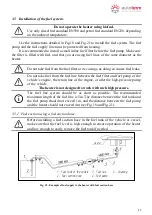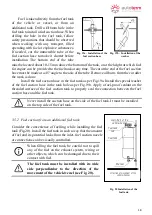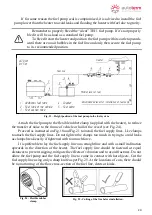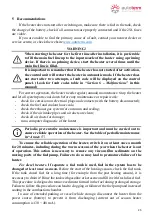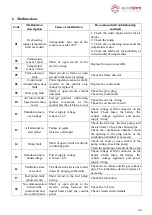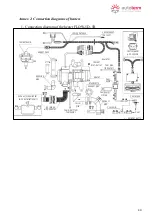
16
If the exhaust pipes of the heater run through the living space or confined
space of the vehicle/vessel, solid stainless-steel pipes must be used. Flexible
exhaust pipes are only suitable for external use and use in engine rooms.
The end of the metal hose should not contact the rubber seal of the heater. It is highly
recommended to install the exhaust gas discharge system in such a way that does not
allow the exhaust gases to flow inside areas used by people; such as the driver's cabin or
the living quarters of a maritime vessel (e.g. away from open windows, doors), to avoid
the possibility of inhaling dangerous exhaust gases.
Do not place the output opening of the exhaust pipe in front of the
incoming airflow of the moving vehicle or vessel (see Fig. 8).
3.4.1
Installing the exhaust adapter on maritime transport
Exhaust gases are discharged away from the vessel. Install the discharge of the
exhaust gases in a location inaccessible to water (at least 60 cm above the waterline) and
to avoid the possibility of re-intake of exhaust gases by the air intake pipe.
To install the exhaust pipe adapter (hull fitting), drill a hole in the hull of the vessel
at least 5 mm larger in diameter than the actual outer diameter of the hull fitting. Install
the exhaust pipe into it as shown in Fig.17 with the pipe looking upwards (to avoid water
infiltration). Install a rubber gasket between the flange of the exhaust pipe and the hull of
the vessel to seal the connection.
To prevent exhaust gas leaks or the exhaust
pipes falling off, it is advised to use exhaust cement or
a different kind of sealant on every connection of the
exhaust pipe. Sailboats should not install the exhaust
adapter on the side of the hull, only at the stern.
1
–
Exhaust pipe adapter;
2
–
Flange of the exhaust pipe;
3
–
Gasket;
4
–
Hull of the vessel;
5
–
Fasteners;
6
–
Clamp;
7
–
Metal hose.
Insulation
Fig. 16 – Installation of additional heat insulation
Fig. 17 - Installation of the exhaust pipe
















